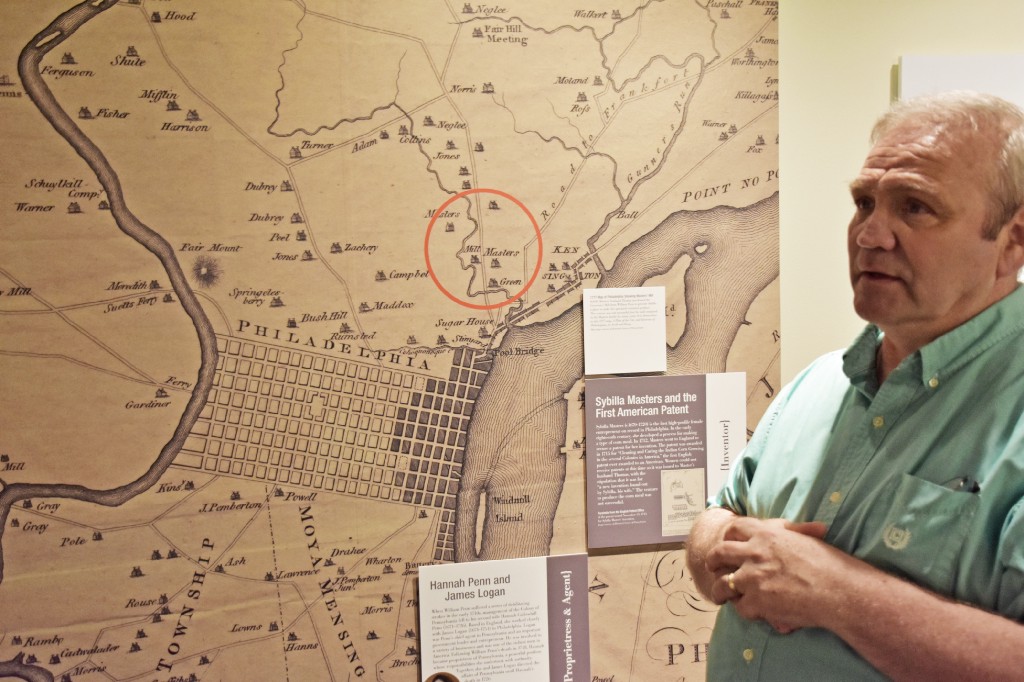A new exhibition on display at The Union League highlights the rich history of Philadelphia.

For lovers of history, the city of Philadelphia can sure offer a lot to observe. Countless Philadelphians since its inception a few centuries ago have left their mark in various ways on the City of Brotherly Love. The Union League, 140 S. Broad St., currently has an exhibit open that highlights some of the giants of Philadelphia’s history.
Jack McCarthy, co-founder of the Northeast Philadelphia History Network and president of the Friends of Northeast Philadelphia History, is the curator of the Union League’s exhibit in the Heritage Center titled, “Risk & Reward: Entrepreneurship and the Making of Philadelphia.”
The Heritage Center at the Union League has been home to a variety of past exhibits such as “Philadelphia 1861: A Coming Storm,” which detailed the “critical first months of 1861” in relation to leading up to the Civil War in Philadelphia, to exhibits such as “Sweep the Country: Political Conventions in Philadelphia,” which showcased the 11 political conventions held in Philadelphia from 1861–2016.
The current exhibit that opened in October 2017 focuses on nine entrepreneurs starting from William Penn, to detailing one of the most influential men in Northeast Philadelphia’s history, Henry Disston, all the way to Atwater Kent.
“We wanted to focus on how these entrepreneurs shaped the city,” said McCarthy. “Not just the physical landscape, but also the financial landscape, and the cultural landscape. So they kind of molded the city.”
McCarthy just a couple of years ago wrote a book on the history of manufacturing in Philadelphia and, when approached about the idea for this exhibit, knew there were so many people whom he could profile. He stressed that these were not simply wealthy individuals to be highlighted, but their influence went beyond just self profit.
“For many of these entrepreneurs that are successful, there are a lot of rewards,” said McCarthy. “They reaped financial rewards themselves, but also there’s rewards for the broader community.”
The exhibit could have lightly covered hundreds of people, or cover in depth a few specific entrepreneurs. McCarthy and company chose the latter, although there are secondary figures briefly highlighted in the exhibit as well.
Another key component in the exhibit is the risk of being an entrepreneur.
“Risk and reward. The idea of risk, (risk) implies the possibility of failure,” said McCarthy. “This is not just an exhibit of the great success stories, there’s a lot of failures in the exhibit.”
An example of failure detailed in the exhibit starts off with the very first person profiled, William Penn. One cannot tell the story of Philadelphia without Penn, but it is noteworthy that he found himself in debtor’s prison and died “penniless.”
The exhibit includes almost 100 artifacts and documents on loan from nine different institutions.
For those interested in the Northeast’s role in the exhibit, look no further than Henry Disston, whose impact is still felt in the city today.
Disston, who arrived to Philadelphia from England at the age of 13, became very influential by opening his own saw shop. His original shop was located in Northern Liberties, but with the crowded atmosphere, he decided to take his talents to where Tacony is located today.
Disston’s intention of a “family centered community” are detailed throughout his section of the exhibit.
“In the late 19th century/early 20th century, Philadelphia was the workshop of the world,” said McCarthy.
At his businesses’ peak, they employed thousands of people working in Tacony, but his business has a very unique trait that sets itself apart from the rest.
“What’s interesting is, all the other manufacturers in the city…they all went out of business or moved,” said McCarthy. “Disston is the only company from Philadelphia’s manufacturing heyday that’s still in business in the city.”
Though there are many fewer workers employed under that business today, it is still operational in Philadelphia.
For those interested in visiting the exhibit, public hours are free Tuesdays and Thursdays from 3 to 6 p.m. and the second Saturday of the month from 1 to 4 p.m. ••





